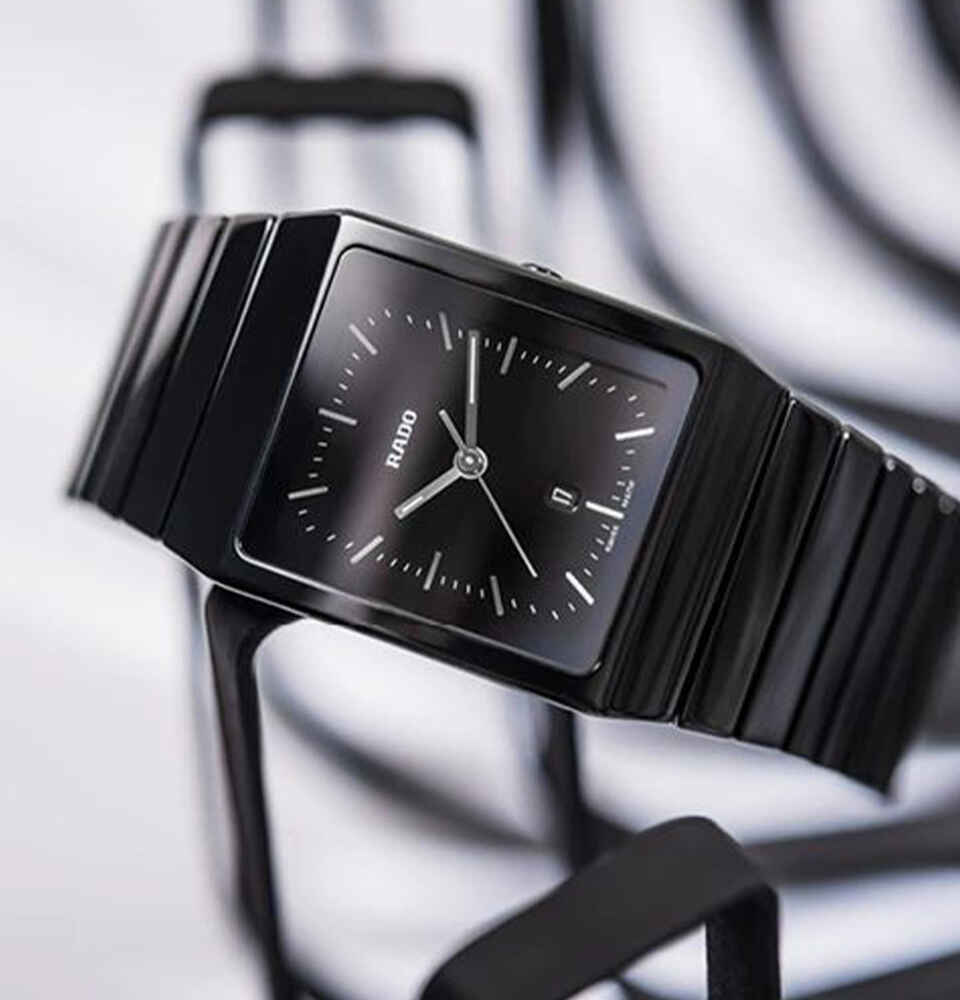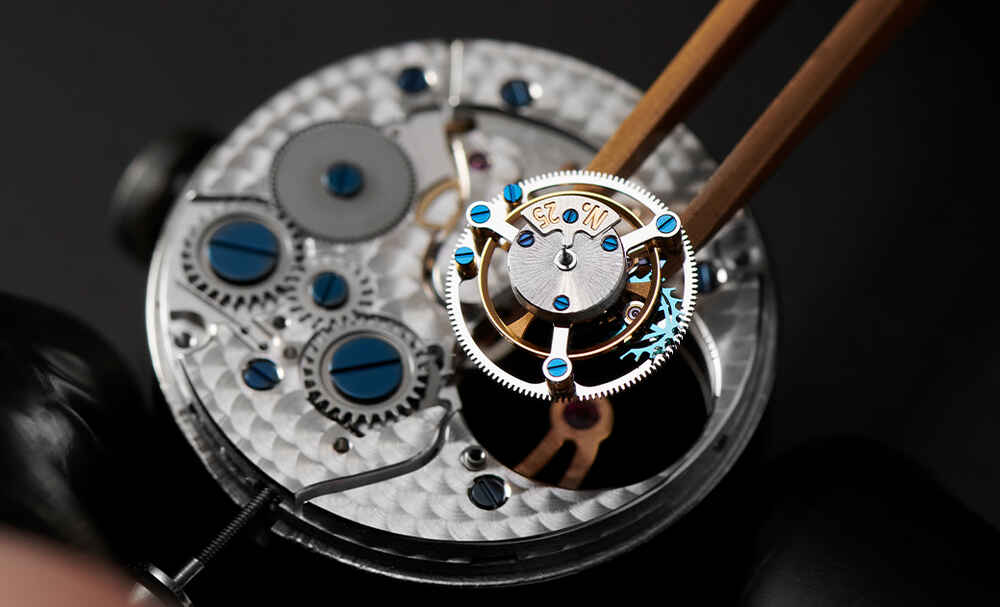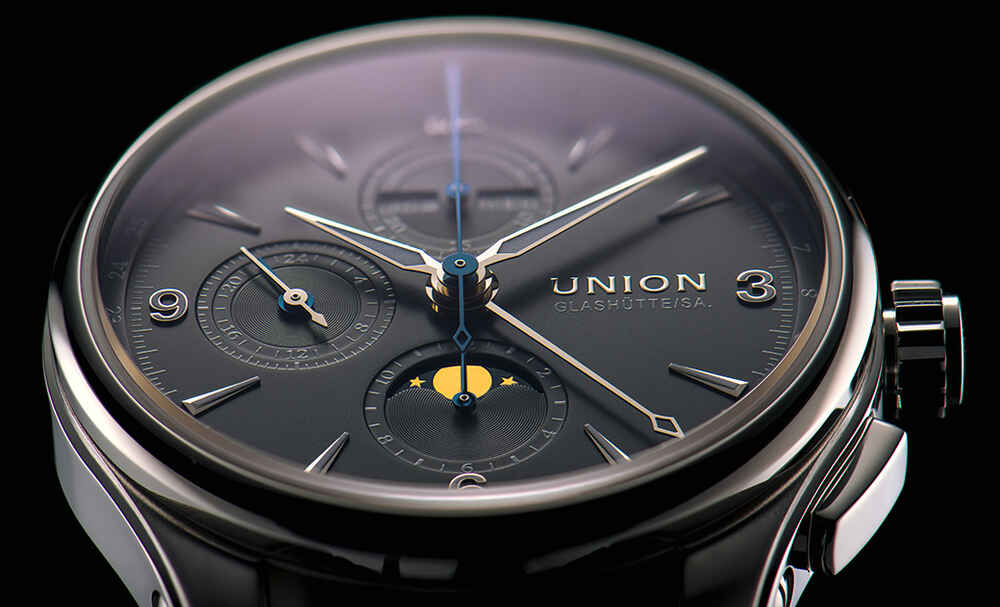Everything you should know about the case of a watch
Classic cases consist of three parts: The bottom, the middle part and the bezel with glass. The middle part has the so-called horns, to which the bracelet is attached. Between the parts there are gaskets.
There are two different types of gaskets used on enclosures: One option is a flat gasket that rests on a surface. This variant is mainly used for inexpensive watches that do not have a high water resistance.
Due to the high friction that occurs during sealing, the ring can slip and be stretched - a definite disadvantage. The other type of seal is the so-called O-ring. This lies on a specially milled groove and thus cannot slip. When the housing is closed, the ring is deformed slightly oval, but cannot be crushed or stretched by the groove.
The movement can also be fixed in the case in various ways. The easiest way is to insert the movement from below, insert the winding stem and secure the whole thing with a movement retaining ring. This is made of metal or plastic and is inserted into the gap between the movement and the watch case to fix the movement.
It is somewhat more complicated to screw the movement retaining ring to the case and the movement, but this provides extended stability. Movement retaining rings have the advantage that any movement can be inserted into a case and thus a high degree of customization is possible.
The most complex is to use a full case. In this method, the middle part of the case itself contains a ring to which the movement is attached. The movement is inserted from the top and fastened with band screws from the bottom. This variant is used mainly for particularly high-end watches. Here, the case and movement are precisely matched to each other like unique pieces.
To guarantee water resistance, the crown and pushers must also be sealed. A tube is normally used for this purpose. The tube is a kind of sleeve that is pressed or screwed into the case. The winding stem is inserted through the tube. Inside, there is a sealing ring that prevents water from entering. However, this is only suitable for splashing water; for diving or swimming, a screw-down crown is necessary. Here, the tube has another thread that the counterpart of the crown engages. Another seal also provides more security.
Chronograph pushers act directly on levers on the outside of the movement and do not require a winding stem. When operating pushers in water, utmost caution is advised, as pressing can open up gaps that could be permeable to water. Most instruction manuals contain precise instructions on this; otherwise, please feel free to contact us!
Originally, brass was used for the construction of casings, which were gold-plated, silver-plated or chrome-plated, as desired. Then, in the 30s, the first steel cases appeared. Today, cases are made of stainless steel, gold, titanium, platinum, ceramic or plastic. Material combinations are possible here. We have summarized the pros and cons of the various materials for you.
Gold and platinum are relatively soft metals, so they scratch more easily than stainless steel or titanium, for example. The advantage, however, is that the materials can be polished very well, so you can easily remove minor scratches from them. In addition, gold has a unique color that has fascinated not only jewelry wearers for thousands of years. Gold watches also have a financial advantage - they are extremely stable in value and luxurious models often even increase in value over the years. Here you should definitely make sure that you keep all the original papers well.
Stainless steel is obtained from ordinary steel. However, there is not only one type of stainless steel - as is often assumed - the designation applies to all those metals that have a particularly high degree of purity. In addition, stainless steel often occurs in alloys. For watch production, such as the watch case, the stainless steel is often obtained from scrap metal - this is heated and liquefied. To obtain the desired degree of purity, it is melted and remelted several times. Watchmakers then obtain the solidified metal in bars or ingots.
The solid metal can only be machined with extremely resistant tools. During the elaborate polishing process, the stainless steel is finely ground. The final polishing is done with the so-called "buff", a tool on which the material becomes so warm that the pores of the surface close - this is how the unique shine is created. Stainless steel is harder than gold or platinum, but it is still not completely immune to scratches. To make it more durable, a PVD coating is often used. A particularly hard metal is vaporized in a vacuum and applied to the case as a thin layer.
Titanium is a component of numerous minerals. However, since it usually only occurs in small quantities, its extraction is complex and expensive. However, it is worth it: titanium is resilient, extremely resistant and light. Titanium was first used for wristwatches in the 1980s and has since found a lively following. Pure titanium is softer than stainless steel.
However, it reacts with oxygen and forms an oxide layer that makes it slightly more scratch resistant than stainless steel. However, it cannot withstand knocks and bumps and can quickly dent or break. To avoid this, either harden the surface or use a particularly hard alloy (with aluminum, for example). One disadvantage, however, is that it is very difficult to machine the material after hardening.
Rado has coined high-tech ceramics as the metal for watches. In 1962, the DiaStar 1, the first scratch-resistant watch, came onto the market. Before that, the material was mainly known in space travel: High-Tech Ceramics serves as a heat shield when space shuttles re-enter the Earth's atmosphere. The ceramic is obtained from titanium carbide or zirconium oxide powder.
The powder is pressed into appropriate molds and then fired in the sintering furnace at high temperature. Different colors are created by adding high-purity and high-melting-point color oxides - thus a wide variety of colors were made possible in addition to the conventional black. Finally, the ceramic watch case is polished with diamond dust to give it its shine. In addition, ceramic does not scratch.
The word bezel can be derived from the French and means small moon. The bezel surrounds the dial and enhances the aesthetics of the watch. However, depending on the type of bezel, you may also have extremely practical functions at your disposal.
The diving bezel: Here, the triangle is placed on the minute hand before the dive. Thus, the past diving time is indicated on the bezel scaling. Since the pushers of a chronograph cannot be operated under water, the bezel is an easy-to-use alternative.
The tachymeter scale: This feature allows you to calculate the speed. The scale uses the formula speed equals distance divided by time. The distance to be covered is set in advance (usually 1km). The distance covered by the second hand on this distance indicates how high the average speed was. This allows you to determine your speed in km/h.
The time zone display: This feature is especially useful on vacation and business trips. The watch has a second hour hand that can show another time on the bezel scale. This allows you to conveniently change the "normal" hands to the local time and read the time in your home country on the bezel. When both hour hands are set to the same time, it is also possible to determine where north is: To do this, point the "normal" hand at the sun, and the second hour hand then points north.
Some timepieces provide multiple bezel functions, allowing you to dive or read speed and dive time while on vacation.
Résumé: So, housings come in many variations: Different housing types, sizes, materials and features. Let us advise you and choose your case according to your individual needs. With the right case, you can enjoy your watch for a long time and give new meaning to your time.









